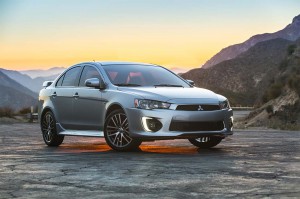
There are, by various estimates, more than 200 different nameplates on the U.S. market these days, and dozens more coming as manufacturers target “white space” their competitors might have missed.
But for every hit there are plenty of misses. And even some once-popular products, like the old Chrysler PT Cruiser, sometimes lose momentum and drive off into the sunset.

The coming year will see a fairly large group of products leave production, as colleague Mark Phelan, from the Detroit Free Press pointed out, with a score of models on the list.
In some cases, they aren’t entirely vanishing. They may be replaced by entirely new vehicles carrying alternative badges. The Cadillac SRX, is one example. The nameplate will go away, but its space will be filled by Caddy’s new XT5. And the Lincoln MKS will be parked in favor of the new Continental.

Some products are going out of production because they would require too much work to meet the latest U.S. safety, emissions or mileage standards. Such is the case with the Mitsubishi Lancer Evo.
(Once written off for dead, Click Here to see why Buick sales are setting new records.)
But in most of these cases, manufacturers are simply pulling the plug on products that have failed to generate much market momentum.
- Cadillac SRX has gone through two generations but has never been able to gain the momentum of rivals like the Lexus RX. It will be replaced by an all-new crossover, the Cadillac XT5’
- Jaguar XK was once seen as the successor to the British maker’s legendary E-Type, but it never delivered the performance fans were expecting, and its role was supplanted by the well-reviewed Jaguar F-Type;
- Honda Crosstour is a product many folks might be surprised was still around in 2015. This odd crossover/sedan take on the Accord just never gained any traction with buyers;
-

No matter what Honda tried it couldn't move the ungainly - and unloved - Crosstour. Hyundai Equus was the Korean maker’s first attempt at building a premium luxury model. It will be replaced with a new sedan using an alphanumeric designation after Hyundai formally debuts its new Genesis luxury brand. The current Genesis sedan, meanwhile will be renamed G90;
- Infiniti Q40 seems to have gotten lost in the shuffle as the Japanese brand has transitioned to a new naming strategy and launched a procession of new models. The old G37-cum-Q40 is being replaced by a more upscale Q50;
- Jeep Compass and Patriot will be going out of production late in the 2016 model-year. But word has it one of those nameplates will be brought back for an entirely new compact SUV model;
- Land Rover Defender and LR2 will be leaving us for those trails in the sky. But the LR2 won’t disappear entirely, the British SUV maker rolling out an assortment of new ute models to fill these gaps;
- Lincoln MKS was supposed to be the American luxury brand’s flagship but it never developed the sort of gravitas to be a real contender. It will be replaced by the newly reborn Lincoln Continental in 2017;
-

Struggling Mitsubishi decided not to use limited resources to keep the Lancer Evo alive. Mazda5 is just the latest in a long list of models abandoned due to the collapse in demand for minivans (remember the old Ford Windstar and Pontiac TranSport?). Mazda is focusing now on crossovers like the soon-to-be updated CX-9;
- Mini Roadster and Coupe are two models in a plethora of offerings from this BMW subsidiary. Wisely, Mini planners have decided to rein in their product proliferation and focus on more core models like the updated Countryman;
- Mitsubishi Lancer Evo is one product that’s hard to explain why it’s on the list. It’s wildly popular with the performance tuner crowd, but the struggling brand is narrowing its focus to a handful of crossovers and green machines, and not spending the money to let Evo meet new U.S. standards;
- Nissan Xterra was one of the growingly scarce examples of a classic, body-on-frame SUV. With rare exception, buyers simply don’t want truck-trucks anymore, but prefer the better handling and mileage of car-based crossovers;
-

The Camry-based Toyota Venza seemed to have everything going for it - except sales numbers. Scion xB, xD and iQ are examples of why Toyota’s youth brand is in trouble. The original, boxy xB was a smash hit but its replacement bombed. The xD was all but forgotten. And the iQ failed to do any better than the Smart Fortwo microcar it emulated;
- Toyota Venza was one of the rare flops from the Japanese giant. It shared its underpinnings with the Camry and initially seemed ready to ride the wave of demand for crossovers. But just because you build it doesn’t mean buyers will come – even if it’s badged Toyota;
- Volkswagen Eos was another model that seemed bound for glory: a Golf-based two-door with a hardtop convertible roof. How could it fail? For one thing, its high price. It also suffered from forgettable looks, mediocre handling and the VW brand’s quality problems.
(Holiday traffic fatalities expected to rise sharply. Click Here for the latest.)
Don’t be surprised to see other models vanish from the industry’s rolls in the coming year. Fiat Chrysler, for one, is planning some major changes to its minivan family. It temporarily extended the life of the Dodge Caravan but that may not last long. And we’re waiting to hear more about plans for the replacement of the current Chrysler Town & Country.
Sluggish sales and other challenges will likely mean at least a few other familiar nameplates will disappear from view by this time next year.
(Average US gas price drops below $2. Click Here for more.)







